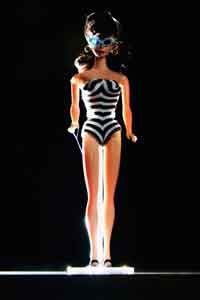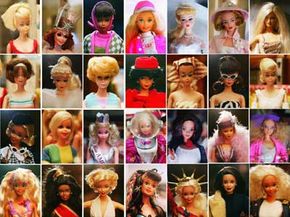On July 24, 1952, a curvaceous bombshell named Lilli graced the pages of the German tabloid Bild Zeitung for the first time. Created by cartoonist Reinhard Beuthien, Lilli was worldly, single and in search of a rich boyfriend.
Think of her as a modern, working girl version of Scarlett O'Hara in "Gone with the Wind." Deprivations brought on by World War II had worn down her spirit, except for a determination to be amply provided for. Passion no longer motivated dating; she was simply on a quest for the wealthiest suitor. Lilli was, in short, a gold digger -- and an attractive one at that. With mile-long legs, a generous bustline and scant clothing, Lilli charmed the magazine's largely male readership. In fact, her brassy personality and pinup figure wooed men so effectively that the cartoon Lilli was transformed into a doll in 1955.
Advertisement
The Lilli doll, which came in 7-inch (17-centimeter) and 11-inch (27-centimeter) sizes, wasn't marketed to little girls -- it was intended for adult men. At that time, girls played with baby dolls and prepubescent-shaped fashion dolls. Lilli, on the other hand, had big, thickly lined eyes that gazed suggestively to the side. Her crimson lips puckered slightly with a flirtatious pout. Standing in black spike heels, Lilli's impossibly petite feet supported a distinct hourglass frame.
With advertising taglines such as, "Whether more or less naked, Lilli is always discreet," and a wardrobe consisting of negligees, tiny tops and tight pants, Lilli dolls were essentially sex toys. People gave them as bachelor gifts, some men rode around with Lilli on their dashboards, and others bought them just for the cheap thrill out of peeping under her alluring ensembles [source: Lord].
But when an American woman named Ruth Handler spied a Lilli doll in a store while vacationing in Switzerland, she didn't see it as a prurient novelty. Instead, she thought it would be the perfect toy for her daughter, Barbara. Handler had observed Barbara and her girlfriends playing with paper dolls that depicted teenage girls or adult women. To Handler, that was their way of practicing for adulthood. Yet, aside from the two-dimensional paper dolls, no other dolls available in stores portrayed the mature female body. For that reason, she bought two Lilli dolls for Barbara during that Switzerland trip in 1956 -- and one for herself.
Advertisement




